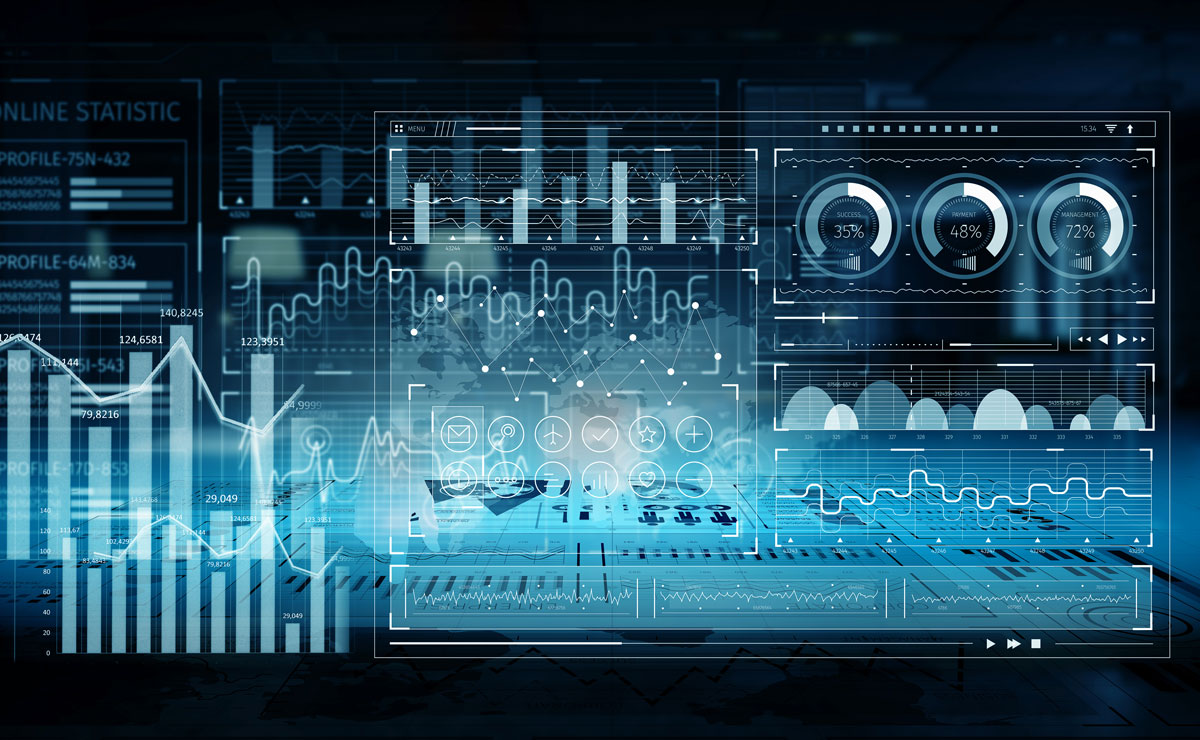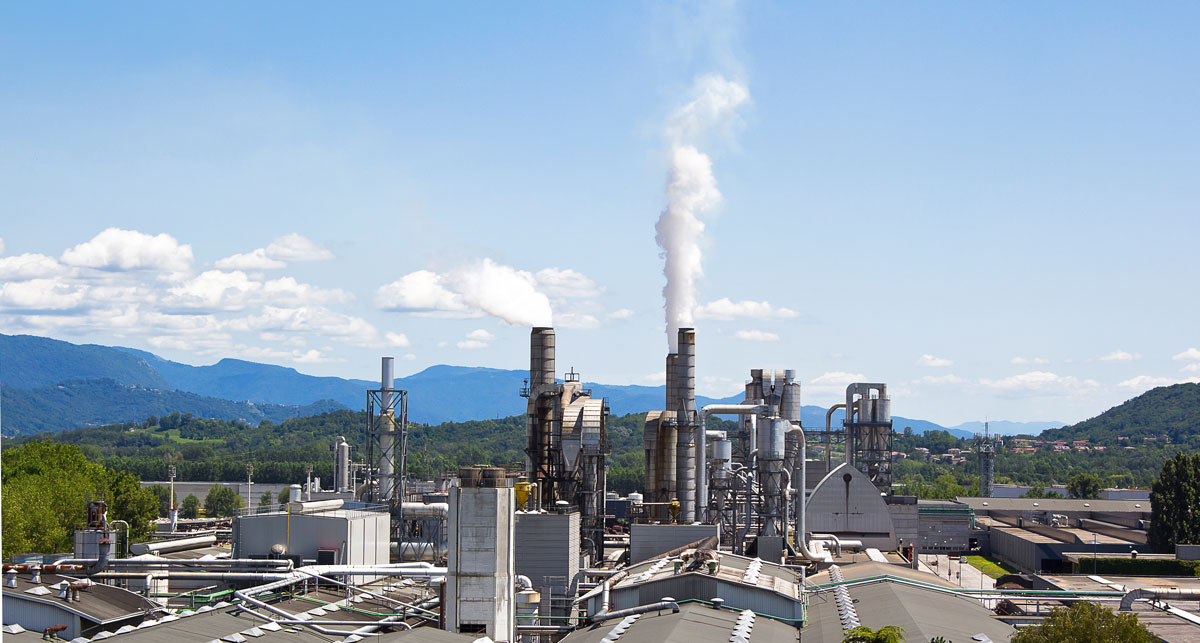The Fourth Industrial Revolution, called 4IR or Industry 4.0, is named for the rapid change in technology, data connectivity, and smart automation that is driving improvement trends throughout the industrial world. Roughly starting in the early 2000s, companies have been implementing changes to improve productivity, efficiencies, and profitability by investing in digital technologies. Machine Learning, Industrial Internet of Things (IIoT), and decision-based software systems are becoming commonplace as costs come down and the need to stay competitive drives buying choices. Regardless of the industry type, companies are making strategic decisions on how best to apply digital technology to their day-to-day operations.
Research shows the primary focus for most digital transformation projects is on process improvements that enhance the customer experience, reduce energy usage, and minimize unplanned downtime. Beyond these main objectives, Industry 4.0 uses technology to help meet Environmental, Social, and Governance (ESG) sustainability by focusing on social development and environmental stewardship. Through these initiatives, companies are addressing not only how they do business now, but the way they will do business in the future. Many ESG digital investment decisions are driven by which aspect of sustainability nets the best results the fastest. Unlike the impact of manufacturing process changes, digitalization investments in ESG are about the long game.
The rewards from these efforts may not hit the bottom line immediately but they do go a long way towards shoring up interest from investors and meeting company sustainability goals. The commitment to a digital strategy gives companies the opportunity to use data connectivity and transparency in conjunction with technology to achieve all of their transformation objectives. All efforts are focused on finding the balance between the digital world while enhancing the human experience, profitability, and ESG sustainability. The urgency to act now and the speed of technological advances opens the potential for implementation pitfalls. Clear thinking and dedication to involving all the company stakeholders are critical before expecting any digital strategy to have the desired impact.
Data Collection Vehicles
One of the first steps in building a digital environment begins with deciding how best to collect, store, and make accessible, the data that a company needs to analyze before making a centralized data system decision. Facility communication architecture and existing technology infrastructure are both parts of the decision tree before committing to a data platform. Once a company clears that hurdle, they can start to focus on a data collection system to support the digital mission. The challenge comes when trying to decide which way to go in advance of other implementations to bring the company’s digital vision to reality.

The key to a successful data decision is understanding what you will be able to mine from it, and what it will look like when you get access to it. You must choose which solution best fits your plan. Balancing future needs against the systems already in place are key considerations before picking your data platform. Understanding how the data flows in/out, and the usability/visibility performance once stored are of the utmost importance. There needs to be a data repository that allows for seamless connectivity to the data sources that feed it. The data platform must provide a meaningful, result-oriented mining method, and be easy for the stakeholders to use from their access points. Once the decision is made the team can move on to evaluating the systems that will feed it.
The Importance of Data Validity & Environmental Air Compliance
In order to get the maximum benefit out of feeding environmental compliance data to a centralized data system, you need to be confident that the source providing the results is in line with the applicable regulations. This starts at the real-time, raw data level and goes right through to all the required iterations needed to support the facility’s compliance obligations. Validation needs to happen at the lowest data collection interval and carry through to all the averaging used to properly report the monitoring system performance. This process is best served when it is handled through a certified, compliance data acquisition system rather than feeding raw data to a data collection platform for baseline processing.

CEMLink 6 was built by compliance experts directing software developers to build a state-of-the-art, compliance data acquisition system. It was designed with guidance from end-user partners that demanded a compliance first approach from their compliance platform provider. Be it a single reporting facility or a corporate environmental department’s desire for a fleetwide standard requiring centralized, on-demand access to validated data, CEMLink 6 handles the job. Built with a flexible backbone, CEMLink 6 evolves in tandem with the ever-changing demands of its users and is the perfect complement to any digital compliance directive.
The CEMLink 6 software system, as designed, is data transparent. This assures that data being reported is accurate and is coming from an official source. As the official source, CEMLink 6 must be able to demonstrate to the regulators that the data is validated in accordance with the specific requirements of the governing agency. When asked to prove the reporting system’s accuracy, the real-time data, 1-minute averages and all underlying calculations used to build the reportable averages must stand up to an outside audit. With its built-in audit logs, data viewer, and transparent configuration interfaces, CEMLink 6 checks all the boxes when it comes to compliance demonstration.
Once the raw data becomes compliance qualified, CEMLink 6 routes it easily to other 3rd party systems through any number of standard protocols. It can communicate seamlessly to and from other data sources for the purpose of making the data available to those that need it throughout an organization. This can work as a local network application, an offsite central server, corporate WAN, and/or in the cloud, as needed to support availability requirements.
CEMLink in the Digital World
VIM has been an active participant in Industry 4.0 even before the movement had a name. The journey started with a shift from analog connectivity between monitoring equipment and the CEMLink 6 system to Ethernet communications supporting soft I/O exchange between devices gathering real-time and diagnostic data. The move towards digitalization was initially forged through our strong partnership with Rockwell Automation using their platform to develop configurable controllers. From here we built a foundation of data transparency offering alternative digital-based solutions to meet the changing landscape of our compliance partners. Today, we pride ourselves on being the transformative leader in the environmental compliance community, open to matching an end-user’s digital vision with our fully compliant, configurable software solutions, with all the bells and whistles.
The CEMLink 6 digital transformation timeline follows closely with the technology evolution and the acceptance of new technology in the environmental compliance community. From the beginning, CEMLink 6 communicated with its primary data collection device, a programmable logic controller (PLC), using Ethernet/IP to establish a response-ready baseline of real-time data tagged with compliance validity that VIM could build on. One of the earliest digital transitions in the environmental monitoring market came with the launch of Modbus TCP/IP outputs by the major analyzer manufacturers replacing the old analog outputs. This move replaced hardwired I/O with soft I/O and CEMLink 6 adapted easily to the change. Soft I/O between monitors has become the standard for simplifying data transfers from monitoring and plant equipment integrations because of CEMLink 6’s seamless abilities.

At the same time the monitor evolution was occurring, VIM was heavily involved in peer-to-peer communications between the various plant control systems and historians. Direct connectivity to plant DCS systems is commonplace providing the emission unit’s operating data required to complete the compliance matrix. Unit on/off signals, pollution control system outputs, fuel usage, and other compliance critical plant inputs come to CEMLink 6 through this digital connectivity method. For those compliance partners relying on historian systems like OSI PI and Aspentech, CEMLink 6 quietly passes compliance-qualified data over the digital wall for plantwide access and distribution through interfaces plant personnel use daily. CEMLink 6 acts as the diligent environmental data watchdog, ensuring the plant tracks compliance at all times.
VIM is currently involved in a fleetwide digital transformation project with a major pulp and paper manufacturer, with CEMLink 6 used as the corporate compliance standard across the entire organization. They have settled on C6 as the last stop for all their environmental compliance data before they report to the various regulatory agencies. Corporate standards are being implemented, as well as site and state-specific requirements, all in a standard compliance platform that can be managed from anywhere. Data for this project is being collected and calculated using proven algorithms, supported by a detailed audit trail for continuous emissions monitoring, continuous parameter monitoring, discharge water monitoring, laboratory data, leak detection, and other continuous and periodic monitoring requirements.
The DAS software has easy-to-use interfaces that translate directly to the regulatory demands featuring onboard preconfigured reports, data export features, and automatic Excel integrations. Once they are ready to report to the various regulatory authorities, CEMLink 6 handles all of these requirements using industry-proven report formats specific to the various agencies throughout the United States. The result is a true digital transformation for compliance strategy that is built for any scenario – present and future.
With over 30 years of compliance software experience, VIM Technologies, Inc. continues to take CEMLink 6 to the digital world. This work is done through collaboration with top industry environmental professionals to build a reliable, trustworthy bridge from the monitored source to the enterprise distribution system, independent of the data platform used to collect it. With our strong end-user partnerships and ongoing access to new technology, VIM is expertly poised to meet the demands of any digital transformation project that has an environmental compliance component.




